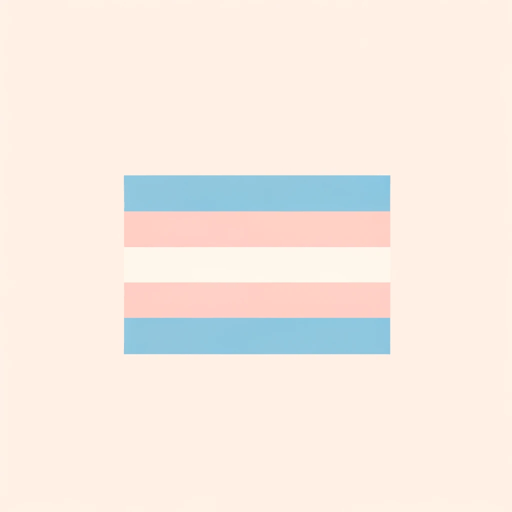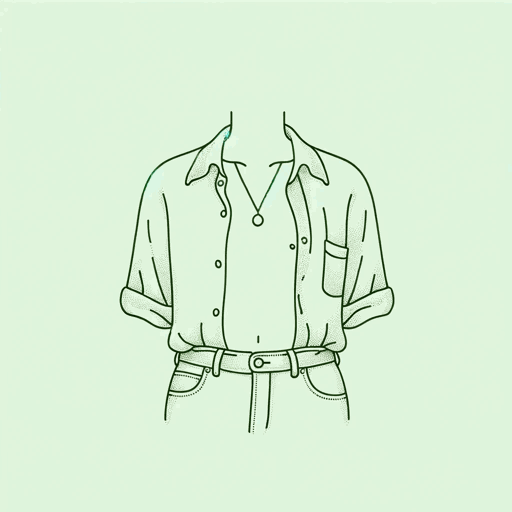47 pages • 1 hour read
Leslie FeinbergTransgender Warriors
Nonfiction | Book | Adult | Published in 1996A modern alternative to SparkNotes and CliffsNotes, SuperSummary offers high-quality Study Guides with detailed chapter summaries and analysis of major themes, characters, and more.
Summary and Study Guide
Overview
Transgender Warriors: Making History from Joan of Arc to Dennis Rodman is a 1996 nonfiction text by American author and activist Leslie Feinberg (1949-2014). The book explores the long history of individuals who cross seemingly immutable boundaries of sex and gender. It is also in part an autobiographical exploration of Feinberg’s own complex relationship to gender, sex, sexuality, and politics. Transgender Warriors advocates for political solidarity within the nascent transgender rights movement and solidarity between trans people and other marginalized groups, including lesbian, gay, and bisexual people, women, people of color, people with disabilities, and working-class people, all of whom, Feinberg argues, have shared political goals and overlapping experiences. Today, Transgender Warriors is considered a major touchstone in LGBT activism.
This guide uses the 1996 Beacon Press edition of the book.
Content Warning: The source text and this guide contain discussions of anti-trans and anti-gay violence, death by suicide, rape, and racism. For information on specific language considerations in this guide, see the Social Context background section.
Summary
As a butch lesbian with a very masculine gender expression, Leslie Feinberg has always struggled to answer questions like “Are you a boy or a girl?” (ix). Having felt left out of discussions of history due to her gender expression, Feinberg decides to compile a history of transgender people around the world. Despite the challenges the project poses, Feinberg believes in the importance of an accessible transgender history to help modern trans people and their allies better understand themselves so that they can work to create a more just world for everyone.
As a child growing up in the 1950s, Feinberg struggled to fit in because she did not look or behave like a typical girl. Misogyny, strict gender roles, homophobia, and antisemitism all took their toll on her, to the point where she “thought [she] would certainly be killed before [she] could grow to adulthood” (6). As a teenager, Feinberg found community with other LGBT people, all of whom feared police raids on their bars. She also developed class consciousness, taking part in communist organizing. To make it easier to hold down various jobs, Feinberg passed as a man. When she finally told her comrades about her identity, they accepted her and helped her learn more about transgender people throughout history. She realized that for much of human history, people lived in cooperative societies without strict gender roles, until class distinctions made it necessary for those in power to police gender expression.
Feinberg explores diverse gender identities and expressions among Indigenous people in North America. Some of these understandings of gender persist today, despite intense suppression under colonialism. Today, most Indigenous gender constructions that fall outside the colonial heterosexual man/woman binary are referred to as “Two-Spirit.” Instead of being ostracized for their differences, many historical and contemporary Two-Spirit individuals have been revered in Indigenous cultures and have played unique social roles. Next, Feinberg looks at the life of Joan of Arc, a 15th-century French peasant girl who as a teenager led the French army to a victory against English forces. She was later imprisoned and burned at the stake. One of the major crimes of which she was accused was wearing men’s clothing, which she said was part of her mission from God. According to some reports from the time, she refused to stop wearing men’s clothes; Feinberg suggests that her insistence indicates that her gender expression was important to her.
Examining historical documents from around the world, Feinberg demonstrates that many pre-industrial societies included individuals—who might now be understood as trans women—who worked as priestesses. Other societies recognized more than two genders or sexes and incorporated various gender expressions into religious rituals. Feinberg wonders why these apparently widespread gender expressions eventually became taboo in many parts of the world. She concludes that the shift from communal hunter-gatherer societies to hierarchical, class-based societies allowed some people to accumulate power over others. To maintain that power, they needed to create rigid categories for people and enforce social punishment for those outside those categories. The rise in anti-trans sentiments corresponded with greater persecution of women, gay and lesbian people, and any other class of people considered inferior.
Feinberg is a “gender outlaw”: Her driver’s license says that she is male, and filling out the form incorrectly is against the law. However, as most people read her as a man, it is safer for her to have a driver’s license that matches her gender expression. She argues that having a gender or sex marker on identification documents is outdated and should be abolished. Ancient Greece and Rome offer further insight into how gender variance can threaten systems of power. The same is true in the Middle Ages, where there is ample evidence of popular uprisings across Europe that were often led by groups of men dressed as women. There are also historical accounts of people who were assigned female at birth but who lived as men. Some people have suggested that women chose to live as men to escape misogyny and live more free lives, but Feinberg disagrees. Passing as a man is challenging and often dangerous, as Feinberg is well aware. She believes that people who made this choice had more complex reasons for doing so.
In the modern day, as transgender people form their own communities and movements, it is becoming clear that true liberation is only possible from a position of solidarity. Feinberg calls on lesbian, gay, bisexual, and transgender people, women, intersex people, people with disabilities, people of color, and working-class people to band together to create a more just world for everyone. A better world, where everyone is free to self-determine and to live with dignity, is possible, but only if many people are willing to fight for it. A strict man-or-woman binary is not the only way, or the most accurate way, to understand human gender and sex, Feinberg says. Instead of focusing on strict definitions of who is or is not a woman, Feinberg advocates for a more inclusive view of gender based on people’s ability to define themselves. The book ends with a portrait gallery showing many transgender and gender-nonconforming individuals and activists. In the Afterword, Feinberg reflects on her own life and on how far the transgender rights movement has come.


